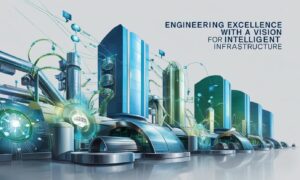In today’s fast-evolving cloud ecosystem, transformative innovation doesn’t always come with flashy headlines or billion-dollar valuations. Often, it’s the work of engineers like Sai Krishna Khanday, who quietly design the resilient backbones powering thousands of critical systems, that truly advances the state of technology.
Khanday, a seasoned DevOps and cloud infrastructure engineer based in New York, has spent nearly a decade building scalable, intelligent platforms for enterprise applications across hybrid and multi-cloud environments.
Building Resilient Systems at Scale
In his current role, Khanday has designed infrastructure platforms that support thousands of users across production, development, and disaster recovery clusters. These systems are architected for reliability, with features such as self-healing capabilities, predictive scaling, and automation governed by policy. This ensures that environments remain operational even under high demand, which is essential for businesses where uptime directly impacts revenue and customer trust.
He views infrastructure not as a backend function but as a product something that should be consistent, modular, and transparent. This philosophy enables development and operations teams to work more efficiently, reducing time spent troubleshooting and enabling faster innovation.
“When infrastructure thinks ahead, engineers can think beyond firefighting,” says Khanday.
His work aligns with a larger trend in modern DevOps culture, where proactive, intelligent systems are replacing legacy, manual methods.
Advancing AI-Driven Infrastructure
What sets Khanday apart is his deep application of artificial intelligence to real-world infrastructure problems. While AI is often discussed in theoretical terms, he has applied it directly within live environments to improve operational efficiency and reliability.
One of his key contributions is the implementation of predictive autoscaling, allowing systems to allocate cloud resources dynamically based on usage patterns, which has helped reduce overprovisioning and control cloud costs. He also developed anomaly detection models capable of flagging performance issues before they affect users. In addition, he led the development of self-optimizing Kubernetes clusters that continuously adjust based on real-time telemetry and historical trends.
These innovations have had a measurable impact, leading to significant reductions in operational overhead and improving system uptime in high-pressure enterprise environments.
Principles Behind the Engineering
Khanday’s infrastructure design principles are grounded in simplicity, modularity, and reproducibility. He promotes the use of open standards and infrastructure-as-code to minimize vendor lock-in and ensure consistency across teams and environments.
He believes in designing systems with a “zero-trust” security model, ensuring that no component is implicitly trusted by default. This approach includes the use of tightly scoped access controls and service mesh frameworks for secure communication between services. His emphasis on “modular automation” allows teams to reuse blueprints and templates that can evolve with the business without creating complexity or risk.
These practices have helped reduce technical debt and enable sustainable growth across large, distributed systems.
Looking Ahead
As enterprise infrastructure becomes more intelligent and decentralized, Khanday continues to explore emerging technologies that promise to reshape the DevOps landscape. He is particularly interested in federated learning models that allow for machine learning across distributed systems without compromising data privacy. He’s also focused on enhancing observability tools at the infrastructure level, which provide real-time insights into system performance, and exploring new models for cloud governance that adapt to dynamic business requirements.
His ability to combine deep technical knowledge with a forward-looking mindset positions him well for the next wave of innovation in infrastructure engineering.
Conclusion
Sai Krishna Khanday may not be a public-facing figure, but his behind-the-scenes contributions are helping define the next generation of intelligent infrastructure. His work, blending real-time automation, AI, and modular system design, shows that progress often comes not from hype, but from thoughtful engineering done right.
As enterprises face growing demands for scalability, security, and agility, professionals like Khanday will be vital to ensuring that the systems we depend on are not just functional, but intelligent and future-ready.































